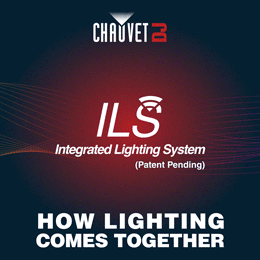News
26 Apr 2018

Batteries – Get Intelligent!

Subscribe to CX E-News
TECH TOOLS
Batteries – Get Intelligent!
By Simon Byrne.
How many batteries do you think are sold each year into the Australian market? About 310 million units! And I’m talking only of your bulk standard AA, AAA, C, D and 9 volt batteries. And how many of those batteries are recovered and recycled? About 2.7%.
From and environmental point of view, 300 million used batteries going into landfill is a travesty.
The production industry would have to be in the “worst offender” category. On a pub level show, with say 6 radio mikes, 4 in ears you’ve gone through 20 batteries. On a big show, you can easily rip through 100 batteries or more.
Apart from environmental harm, the cost equation is a no brainer. Rechargeable batteries can be recharged and used again between 500 and 2000 times, yet the cost of a good rechargeable is only about 6 times more than it’s Alkaline counterpart. That is, after 6 uses they’ve paid for themselves.
We are prime candidates for rechargeable batteries but many users worry that rechargeables will fail mid show, which simply must not happen. However, technology is alway marching forward and things have improved. For those who have not made the change, perhaps it’s time to move away from those costly, single use alkaline batteries.
NICKEL METAL HYDRIDE BATTERIES
The most common AA size rechargeable battery is Nickel Metal Hydride (NiMh) which is a successor to Nickel Cadmium (NICd). You do not want Nickel Cadmium, it is now old technology and Cadmium is horrible stuff. Ingestion of any significant amount of cadmium causes immediate poisoning and damage to the liver and the kidneys. At a minimum, quality NiMh batteries is what you should be after.
The latest AA NiMH batteries provide approximately 75% of the capacity of alkaline AA batteries at low drain rates, but the good news is that they can exceed alkaline performance in high drain applications (i.e. wireless transmitters). That means in today’s modern power hungry gear you can expect comparable, sometimes better performance.
Due to their chemistry, Nickel Metal Hydride batteries deliver 1.2 volts whereas an alkaline battery initially deliver 1.5 volts. Some manufacturers may claim that their devices need the full 1.5 volts to work properly. I say… in most cases, not really true.
An alkaline cell does not deliver a constant voltage. The voltage drops as the battery discharges, and it also drops due to internal resistance as the load increases. Therefore, they’ll deliver 1.5 volts initially, but will quickly drop to about 1.2 volts, and then even lower as it discharges. A 1.2 volt NiMh cell is much more linear in it’s discharge in that it starts off at 1.2 volts, and pretty much stays there for most of it’s life, and then falls really quickly after that.
This is both good and bad. The good is that you have a consistent voltage source but when it drops, it drops off a cliff so it is difficult, if not impossible to accurately monitor battery condition. Therefore the best way to monitor battery condition is by time. That is, plan to have plenty of battery time up your sleeve.
 I set up a test rig using eight wireless microphones. Using my RF Explorer and Touchstone Pro, I can accurately log the RF output of the microphones. The runtime on average for alkaline batteries (Duracell Coppertops) was 10 hours and 32 minutes. The NiMh (Eneloop) was slightly longer, 11 hours and 6 minutes. Using these figures, I can comfortably do a show using NiMh with runtime to spare.
I set up a test rig using eight wireless microphones. Using my RF Explorer and Touchstone Pro, I can accurately log the RF output of the microphones. The runtime on average for alkaline batteries (Duracell Coppertops) was 10 hours and 32 minutes. The NiMh (Eneloop) was slightly longer, 11 hours and 6 minutes. Using these figures, I can comfortably do a show using NiMh with runtime to spare.
What about memory effect? Memory effect is reduced battery performance over time, mainly due to overcharging, and not maintained with periodic deep discharges. With NiCd batteries it is a significant problem (another reason not to use them). With NiMh it is much less of an issue, but they still degrade over time. Around 15% over two to three years as long as they are cared for.
The most damage done to rechargeable NiMh batteries is done by over charging, and over discharging. An intelligent charger solves this so they are absolutely critical to maintain good battery performance. Intelligent chargers do three things that their dumber counterparts do not:
Charge rate – The internal resistance of the battery changes as it is charged. An intelligent charger monitors and accounts for this change and adjusts the charge so that the battery is not overcharged.
Trickle charge – in the final stages of charging, the current is reduced to a trickle which ensure the batteries are charged to their maximum capacity, but not overcharged.
Intelligent Discharge – NiMh batteries are damaged when they are over discharged. That happens when a load is applied for too long and the battery continues to discharge beyond which the chemistry inside the battery is designed for. The chemistry actually goes into reverse and damage is done. Intelligent chargers in discharge mode monitor the voltage as the battery discharges and stops before damage can occur.
Up until now, I’ve only discussed AA sized batteries which deliver 1.2 volts. The 9 volt size batteries only deliver about 8.4 volts for similar design reasons. Once again, this should be fine for most applications.
LITHIUM ION BATTERIES
Not to be confused with their non rechargeable namesakes, the rechargeable lithium-ion batteries are widely used in mobile phones, digital cameras, and laptops because of their long life, high energy density, no memory effect and fast charge.Why then, are they so rare when it comes to AA sized 1.5 volt batteries? It is due to the chemical nature of the batteries themselves. The inherent voltage of a lithium battery cell is 3.7 volts, while that of normal AA battery is 1.5 volts.
 Because of this, It is hard to make a AA sized, 1.5 volt Li-Ion battery because you need to efficiently convert 3.7 volts into 1.5 volts within the AA package. You also need to have a way to charge them because the charge voltage need would still be well above 3.7 volts.
Because of this, It is hard to make a AA sized, 1.5 volt Li-Ion battery because you need to efficiently convert 3.7 volts into 1.5 volts within the AA package. You also need to have a way to charge them because the charge voltage need would still be well above 3.7 volts.
Despite these shortcomings, there are some 1.5 volt Li-Ion batteries available made specifically for the pro audio market by Ipowerus (link at the end of this article). If they live up to their claims, these sound ideal for devices that absolutely need the full 1.5 volts.
Li-Ion batteries are harder to keep safe as they contain a flammable electrolyte which can catch fire when overcharged, may be kept pressurised and have a lot of energy contained in a small space. Remember the 2016 Samsung Galaxy Note 7 recall for battery fires?
However, when the equipment has an option for Li-Ion batteries, it is absolutely the way to go. For example, Shure’s Li-Ion battery option for their ULXD series is superb. Long run time, no memory effect and more accurate battery life metering that is displayed in hours and minutes instead of bars (sometimes displayed on your mixer’s screen too!) as well as clever features such as turning off the transmitter when it is put in it’s charge cradle.
You can get 9 volt format Li-Ion batteries, unfortunately though their nominal voltage is only 7.4 volts which is too low for many wireless microphones. Probably best to stay with NiMh in these applications.
HERE ARE SOME MANAGEMENT TIPS IF YOU USE NIMH BATTERIES
• As soon as you purchase new batteries, write the purchase date on them in permanent marker. They will age so a record of when they were put into service is important.
• Buy an intelligent charger, it is super important as it will minimise any memory effect and prolong battery life. You don’t want dumb chargers as part of your system as they’ll do more damage
than good.
• Buy name brand quality batteries.
• Regularly (but not always), fully discharge your batteries using the intelligent charger only.
• Develop strong procedures amongst your team so that you know what batteries are charged, and what ones are not to be used.
• Unless your wireless microphones have a specific mode for monitoring battery condition for NiMh batteries, don’t rely on the display. Keep a track of the time that the batteries have been in use (you put new ones in for every show anyway, right?).
The sky did not fall in when we changed wireless microphone frequencies as a result of the restack. We educated ourselves, got smarter, bought the right gear and improved our planning. The same should be for battery management. The environment will thank you, and importantly it is great for your bottom line!
DEFINITION OF TERMS
Voltage (Volts) – Think of it as the electrical equivalent of pressure in a water hose. If you have a very high voltage, it is at “High pressure” voltage.
Current (Amperes or Amps) – The flow of electricity, or in the hose analogy, the flow rate of water.
Amp Hour – A measure of current capacity, over an hour. For example 2700 Milliamp Hour is 2.7 amps over an hour, or 1.35 amps over 2 hours.
Power (Watts) – A measure of work. Power equals Voltage times Current.
Watt Hour – A measure of work capacity over an hour. So 2,700 milliamp hour time 1.2 volts, can deliver 3.24 watts for an hour, or 1.62 watts for 2 hours.
Resistance – The measure of the degree to which a conductor opposes an electric current. Using the water analogy, a tap can have an extremely high resistance (tap closed) and anywhere to very low resistance (tap fully open).
Link: Ipowerus Li-Ion batteries
This article first appeared in the print edition of CX Magazine April 2018, pp.59-61. CX Magazine is Australia and New Zealand’s only publication dedicated to entertainment technology news and issues. Read all editions for free or search our archive www.cxnetwork.com.au
© CX Media
See also: Qantas and Virgin rules re batteries on planes, plus other useful Tech Tips for April 2018
Subscribe
Published monthly since 1991, our famous AV industry magazine is free for download or pay for print. Subscribers also receive CX News, our free weekly email with the latest industry news and jobs.











